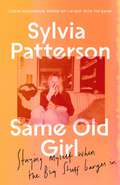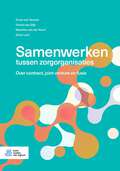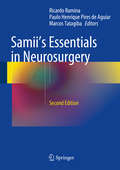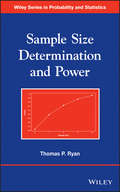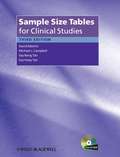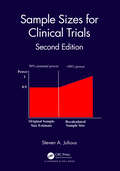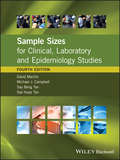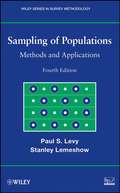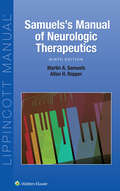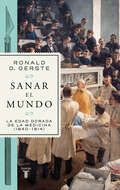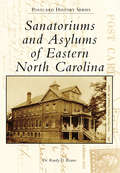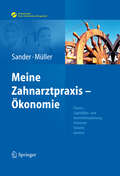- Table View
- List View
Same Old Girl: Staying alive, staying sane, staying myself
by Sylvia Patterson'There's no mistaking the writing of Sylvia Patterson' Sunday Times'One of the finest writers in the world' David QuantickHow does the big stuff in life truly change us?In late 2019, Sylvia Patterson was a celebrated pop journalist, still merrily writing about the musical greats. But with the diagnosis of a life-threatening disease, a global pandemic and the collapse of her industry, life was about to take a drastic turn.It was a misadventure that would teach her many things. The power of friendship, the shock of mortality and what happens when love is tested. How a walk in the park, a spontaneous dance and a TV hero can save your life. How your perspective can shift on everything, from work, family and music, to what truly makes you happy. And what really happens when your body, never mind your kitchen, falls apart.The follow-up to the Costa-shortlisted I'm Not with the Band, this is Sylvia's unflinching, poignant and gallows-funny odyssey through the mid-life trials we all face, as she tries to answer the big question: would it all change her, or would she stay that same old girl?
Same Old Girl: Staying alive, staying sane, staying myself
by Sylvia Patterson'There's no mistaking the writing of Sylvia Patterson' Sunday Times'One of the finest writers in the world' David QuantickHow does the big stuff in life truly change us?In late 2019, Sylvia Patterson was a celebrated pop journalist, still merrily writing about the musical greats. But with the diagnosis of a life-threatening disease, a global pandemic and the collapse of her industry, life was about to take a drastic turn.It was a misadventure that would teach her many things. The power of friendship, the shock of mortality and what happens when love is tested. How a walk in the park, a spontaneous dance and a TV hero can save your life. How your perspective can shift on everything, from work, family and music, to what truly makes you happy. And what really happens when your body, never mind your kitchen, falls apart.The follow-up to the Costa-shortlisted I'm Not with the Band, this is Sylvia's unflinching, poignant and gallows-funny odyssey through the mid-life trials we all face, as she tries to answer the big question: would it all change her, or would she stay that same old girl?
Same Old Girl: Staying alive, staying sane, staying myself
by Sylvia Patterson'There's no mistaking the writing of Sylvia Patterson' Sunday Times'One of the finest writers in the world' David QuantickHow does the big stuff in life truly change us?In late 2019, Sylvia Patterson was a celebrated pop journalist, still merrily writing about the musical greats. But with the diagnosis of a life-threatening disease, a global pandemic and the collapse of her industry, life was about to take a drastic turn.It was a misadventure that would teach her many things. The power of friendship, the shock of mortality and what happens when love is tested. How a walk in the park, a spontaneous dance and a TV hero can save your life. How your perspective can shift on everything, from work, family and music, to what truly makes you happy. And what really happens when your body, never mind your kitchen, falls apart.The follow-up to the Costa-shortlisted I'm Not with the Band, this is Sylvia's unflinching, poignant and gallows-funny odyssey through the mid-life trials we all face, as she tries to answer the big question: would it all change her, or would she stay that same old girl?
Same-Sex Families and Legal Recognition in Europe (European Studies of Population #24)
by Marie DigoixThis open access book focuses on family diversity from a legal, demographical and sociological perspective. It investigates what is at stake in the life of homosexuals in the field of family formation, parenting and parenthood, what it brings to everyday life, the support of the law, and what its absence implies. The book shows the paths leading to the adoption of laws while demographic analyses concentrate on the link between registration of same-sex marriages and same-sex parenting with a detailed focus on Spain. The sociological chapters in this book, based upon qualitative surveys in France, Iceland and Italy, underline how the importance of the legal structure influenced the daily life of homosexual families. As such this book is an interesting read to lawyers, demographers, sociologists, behavioural scientists, and all those working in the field.
Samenspel en samenklank
by Ernest Müter Geert H. BlijhamUniversitair Medische Centra zijn grote en complexe organisaties met drie verschillende kernactiviteiten: onderwijs, onderzoek en patiëntenzorg. Hoe bereik je in zo'n pluriforme organisatie een goed samenspel en een mooie samenklank? Hoe organiseer je een UMC? Deze vragen staan centraal in deze uitgave. Sinds 2002 is de organisatie van het UMC Utrecht ingrijpend verbeterd door het project B&O (Besturingsfilosofie en Organisatiestructuur). Samenspel en samenklank beschrijft de voorgeschiedenis van en de aanleiding voor dit project. Het gaat in op de keuzes die de projectgroep en de Raad van Bestuur hebben gemaakt en hoe die keuzes zijn geïmplementeerd. Aan de hand van een aantal interviews wordt duidelijk welke verbeteringen dit heeft opgeleverd. Het succesvolle organisatiemodel van het UMC Utrecht kan een voorbeeld zijn voor andere organisaties. Samenspel en samenklank helpt bestuurders en managers in de zorg om een bijdrage te leveren aan positieve veranderingen in hun eigen organisatie.
Samenspende und Register: Analyse und rechtsvergleichende Bewertung (MedR Schriftenreihe Medizinrecht)
by Saskia KöppenDieses Buch analysiert die Rechtslage im Hinblick auf die heterologe Insemination in Deutschland, Österreich und der Schweiz. Den Schwerpunkt bildet dabei die Untersuchung des im Jahre 2018 in Deutschland in Kraft getretenen Samenspenderregistergesetzes.In einem ersten Teil wird der Leser in die Grundlagen der Reproduktionsmedizin eingeführt, wobei auch die bislang noch offene Frage der Zulässigkeit der heterologen Insemination mit Sperma bereits verstorbener Samenspender diskutiert wird.Auf dieser Basis erfolgt eine Analyse der rechtlichen Verwandtschaftsbeziehungen zwischen dem Spenderkind und seinen Eltern unter Geltung sowohl der alten als auch der neuen Rechtslage. Den Kern des Werks bildet die umfassende Analyse des Samenspenderregistergesetzes. Neben einer ausführlichen Kommentierung erfolgt eine rechtspolitische Bewertung der einzelnen Normen, ehe eine detallierte Verfassungsmäßigkeitsprüfung vorgenommen wird.Anhand eines Rechtsvergleichs mit den Fortpflanzungsmedizingesetzen von Österreich und der Schweiz werden schließlich verschiedene Lösungsvorschläge für die aufgezeigten Lücken präsentiert.
Samenwerken tussen zorgorganisaties: Over contract, joint venture en fusie
by Ernie van Dooren Fenna van Dijk Maarten van der Voort Eline LamMet de recente decentralisaties in de care ontstaat er een nieuw speelveld waarbij beleidsterreinen in elkaar overvloeien en de burger en de cliënt centraal staan. Niet meer de aandoening of beperking is bepalend maar de persoonlijke situatie. In de cure is een ontwikkeling te zien waarbij er steeds meer wordt gezocht naar efficiënter werken. De care en de cure worden steeds meer logisch met elkaar verbonden en nieuwe vormen van integrated care ontstaan. Deze ontwikkelingen hebben effect op zorgaanbieders. Waar ze tot voor kort per sector waren georganiseerd, ontstaan er steeds meer intersectorale verbanden. Concreet betekent dit dat zorgaanbieders zich hierop moeten aanpassen. Partijen gaan samenwerken of joint ventures oprichten. Uiteindelijk ontstaan nieuwe organisaties door fusies en overnames.In de praktijk bestaat veel onduidelijkheid over een efficiënte inrichting van samenwerkingen en de consequenties daarvan. Er blijkt een grote vraag naar een handzame toelichting over de verschillende mogelijkheden van samenwerken en over de organisatorische en juridische consequenties. Met dit boek willen we leden van raden van bestuur en toezicht, bestuurders, managers en anderen die met samenwerkingen te maken krijgen meer duidelijkheid geven. We pretenderen hiermee niet volledig (juridisch) uitputtend te zijn maar willen een handzaam overzicht geven. In dit boek komen de bedrijfskundige, fiscale, juridische en organisatorische aandachtspunten en consequenties van de verschillende vormen van samenwerking aan de orde. Deze worden verduidelijkt door een aantal casussen en checklists die als bijlagen zijn opgenomen.
Samenwerken tussen zorgorganisaties: Over contract, joint venture en fusie
by Ernie van Dooren Fenna van Dijk Maarten van der Voort Henrike BerghuisMet de recente decentralisaties in de care ontstaat er een nieuw speelveld waarbij beleidsterreinen in elkaar overvloeien en de burger en de cliënt centraal staan. Niet meer de aandoening of beperking is bepalend maar de persoonlijke situatie. In de cure is een ontwikkeling te zien waarbij er steeds meer wordt gezocht naar efficiënter werken. De care en de cure worden steeds meer logisch met elkaar verbonden en nieuwe vormen van integrated care ontstaan. Deze ontwikkelingen hebben effect op zorgaanbieders. Waar ze tot voor kort per sector waren georganiseerd, ontstaan er steeds meer intersectorale verbanden. Concreet betekent dit dat zorgaanbieders zich hierop moeten aanpassen. Partijen gaan samenwerken of joint ventures oprichten. Uiteindelijk ontstaan nieuwe organisaties door fusies en overnames.In de praktijk bestaat veel onduidelijkheid over een efficiënte inrichting van samenwerkingen en de consequenties daarvan. Er blijkt een grote vraag naar een handzame toelichting over de verschillende mogelijkheden van samenwerken en over de organisatorische en juridische consequenties. Met dit boek willen we leden van raden van bestuur en toezicht, bestuurders, managers en anderen die met samenwerkingen te maken krijgen meer duidelijkheid geven. We pretenderen hiermee niet volledig (juridisch) uitputtend te zijn maar willen een handzaam overzicht geven. In dit boek komen de bedrijfskundige, fiscale, juridische en organisatorische aandachtspunten en consequenties van de verschillende vormen van samenwerking aan de orde. Deze worden verduidelijkt door een aantal casussen en checklists die als bijlagen zijn opgenomen.
Samii's Essentials in Neurosurgery
by Ricardo Ramina Paulo Henrique Pires de Aguiar Marcos TatagibaThis second edition of Samii's Essentials in Neurosurgery contains revised and updated versions of chapters from the first edition plus contributions on new topics written by leading neurosurgeons who were trained by Professor Madjid Samii in Hannover, Germany Almost all fields of neurosurgery are covered. The authors follow the traditional principles of Samii's philosophy in the diagnosis and management of various neurosurgical pathologies, while presenting their own personal experiences. The extensively illustrated texts document clearly how cutting-edge technology in neurosurgery is being applied in new approaches and techniques. This book will greatly assist neurosurgeons, ENT surgeons, neuroradiologists, neurologists, and neurophysiotherapists in their everyday practice.
Sample Preparation in Biological Mass Spectrometry
by Alexander R. Ivanov Alexander V. LazarevThe aim of this book is to provide the researcher with important sample preparation strategies in a wide variety of analyte molecules, specimens, methods, and biological applications requiring mass spectrometric analysis as a detection end-point. In this volume we have compiled the contributions from several laboratories which are employing mass spectrometry for biological analysis. With the latest inventions and introduction of highly sophisticated mass spectrometry equipment sample preparation becomes an extremely important bottleneck of biomedical analysis. We have a goal of giving the reader several successful examples of sample preparation, development and optimization, leading to the success in analytical steps and proper conclusions made at the end of the day. This book is structured as a compilation of contributed chapters ranging from protocols to research articles and reviews. The main philosophy of this volume is that sample preparation methods have to be optimized and validated for every project, for every sample type and for every downstream analytical technique.
Sample Preparation of Pharmaceutical Dosage Forms
by Beverly NickersonThis book is intended to serve as a resource for analysts in developing and troubleshooting sample preparation methods. These are critical activities in providing accurate and reliable data throughout the lifecycle of a drug product. This book is divided into four parts: * Part One covers dosage form and diluent properties that impact sample preparation of pharmaceutical dosage forms and the importance of sampling considerations in generating data representative of the drug product batch. * Part Two reviews specific sample preparation techniques typically used with pharmaceutical dosage forms. * Part Three discusses sample preparation method development for different types of dosage forms including addressing drug excipient interactions and post extraction considerations, as well as method validation and applying Quality by Design (QbD) principles to sample preparation methods. * Part Four examines additional topics in sample preparation including automation, investigating aberrant potency results, green chemistry considerations for sample preparation and the ideal case where no sample preparation is required for sample analysis.
Sample Size Calculations for Clustered and Longitudinal Outcomes in Clinical Research (Chapman & Hall/CRC Biostatistics Series #71)
by Song Zhang Chul Ahn Moonseoung HeoAccurate sample size calculation ensures that clinical studies have adequate power to detect clinically meaningful effects. This results in the efficient use of resources and avoids exposing a disproportionate number of patients to experimental treatments caused by an overpowered study. Sample Size Calculations for Clustered and Longitudinal Outcom
Sample Size Calculations in Clinical Research (Chapman & Hall/CRC Biostatistics Series)
by Shein-Chung Chow Jun Shao Hansheng Wang Yuliya LokhnyginaPraise for the Second Edition: "… this is a useful, comprehensive compendium of almost every possible sample size formula. The strong organization and carefully defined formulae will aid any researcher designing a study." -Biometrics "This impressive book contains formulae for computing sample size in a wide range of settings. One-sample studies and two-sample comparisons for quantitative, binary, and time-to-event outcomes are covered comprehensively, with separate sample size formulae for testing equality, non-inferiority, and equivalence. Many less familiar topics are also covered …" – Journal of the Royal Statistical Society Sample Size Calculations in Clinical Research, Third Edition presents statistical procedures for performing sample size calculations during various phases of clinical research and development. A comprehensive and unified presentation of statistical concepts and practical applications, this book includes a well-balanced summary of current and emerging clinical issues, regulatory requirements, and recently developed statistical methodologies for sample size calculation. Features: Compares the relative merits and disadvantages of statistical methods for sample size calculations Explains how the formulae and procedures for sample size calculations can be used in a variety of clinical research and development stages Presents real-world examples from several therapeutic areas, including cardiovascular medicine, the central nervous system, anti-infective medicine, oncology, and women’s health Provides sample size calculations for dose response studies, microarray studies, and Bayesian approaches This new edition is updated throughout, includes many new sections, and five new chapters on emerging topics: two stage seamless adaptive designs, cluster randomized trial design, zero-inflated Poisson distribution, clinical trials with extremely low incidence rates, and clinical trial simulation.
Sample Size Determination and Power
by Thomas P. RyanA comprehensive approach to sample size determination and power with applications for a variety of fieldsSample Size Determination and Power features a modern introduction to the applicability of sample size determination and provides a variety of discussions on broad topics including epidemiology, microarrays, survival analysis and reliability, design of experiments, regression, and confidence intervals.The book distinctively merges applications from numerous fields such as statistics, biostatistics, the health sciences, and engineering in order to provide a complete introduction to the general statistical use of sample size determination. Advanced topics including multivariate analysis, clinical trials, and quality improvement are addressed, and in addition, the book provides considerable guidance on available software for sample size determination. Written by a well-known author who has extensively class-tested the material, Sample Size Determination and Power: Highlights the applicability of sample size determination and provides extensive literature coveragePresents a modern, general approach to relevant software to guide sample size determination including CATD (computer-aided trial design)Addresses the use of sample size determination in grant proposals and provides up-to-date references for grant investigatorsAn appealing reference book for scientific researchers in a variety of fields, such as statistics, biostatistics, the health sciences, mathematics, ecology, and geology, who use sampling and estimation methods in their work, Sample Size Determination and Power is also an ideal supplementary text for upper-level undergraduate and graduate-level courses in statistical sampling.
Sample Size Determination in Clinical Trials with Multiple Endpoints
by Toshimitsu Hamasaki Scott R. Evans Takashi Sozu Tomoyuki SugimotoThis book integrates recent methodological developments for calculating the sample size and power in trials with more than one endpoint considered as multiple primary or co-primary, offering an important reference work for statisticians working in this area. The determination of sample size and the evaluation of power are fundamental and critical elements in the design of clinical trials. If the sample size is too small, important effects may go unnoticed; if the sample size is too large, it represents a waste of resources and unethically puts more participants at risk than necessary. Recently many clinical trials have been designed with more than one endpoint considered as multiple primary or co-primary, creating a need for new approaches to the design and analysis of these clinical trials. The book focuses on the evaluation of power and sample size determination when comparing the effects of two interventions in superiority clinical trials with multiple endpoints. Methods for sample size calculation in clinical trials where the alternative hypothesis is that there are effects on ALL endpoints are discussed in detail. The book also briefly examines trials designed with an alternative hypothesis of an effect on AT LEAST ONE endpoint with a prespecified non-ordering of endpoints.
Sample Size Tables for Clinical Studies
by Michael J. Campbell David Machin Sze-Huey Tan Say-Beng TanThis book provides statisticians and researchers with the statistical tools - equations, formulae and numerical tables - to design and plan clinical studies and carry out accurate, reliable and reproducible analysis of the data so obtained. There is no way around this as incorrect procedure in clinical studies means that the researcher's paper will not be accepted by a peer-reviewed journal. Planning and analysing clinical studies is a very complicated business and this book provides indispensible factual information.
Sample Sizes for Clinical Trials
by Steven A. JuliousSample Sizes for Clinical Trials, Second Edition is a practical book that assists researchers in their estimation of the sample size for clinical trials. Throughout the book there are detailed worked examples to illustrate both how to do the calculations and how to present them to colleagues or in protocols. The book also highlights some of the pitfalls in calculations as well as the key steps that lead to the final sample size calculation. Features: Comprehensive coverage of sample size calculations, including Normal, binary, ordinal, and survival outcome data Covers superiority, equivalence, non-inferiority, bioequivalence and precision objectives for both parallel group and crossover designs Highlights how trial objectives impact the study design with respect to both the derivation of sample formulae and the size of the study Motivated with examples of real-life clinical trials showing how the calculations can be applied New edition is extended with all chapters revised, some substantially, and four completely new chapters on multiplicity, cluster trials, pilot studies, and single arm trials The book is primarily aimed at researchers and practitioners of clinical trials and biostatistics, and could be used to teach a course on sample size calculations. The importance of a sample size calculation when designing a clinical trial is highlighted in the book. It enables readers to quickly find an appropriate sample size formula, with an associated worked example, complemented by tables to assist in the calculations.
Sample Sizes for Clinical, Laboratory and Epidemiology Studies (Fourth Edition)
by Michael J. Campbell David Machin Sze-Huey Tan Say-Beng TanNow in its fourth and extended edition, Sample Sizes for Clinical, Laboratory and Epidemiology Studiesincludes the sample size software (SSS) and formulae and numerical tables needed to design valid clinical studies. The text covers clinical as well as laboratory and epidemiology studies and contains the information needed to ensure a study will form a valid contribution to medical research. <p><p> The authors, noted experts in the field, explain step by step and explore the wide range of considerations necessary to assist investigational teams when deriving an appropriate sample size for their when planned study. The book contains sets of sample size tables with companion explanations and clear worked out examples based on real data. In addition, the text offers bibliography and references sections that are designed to be helpful with guidance on the principles discussed.
Sampling of Populations: Methods and Applications (Wiley Series in Survey Methodology #Vol. 318)
by Stanley Lemeshow Paul S. LevyA trusted classic on the key methods in population sampling—now in a modernized and expanded new edition Sampling of Populations, Fourth Edition continues to serve as an all-inclusive resource on the basic and most current practices in population sampling. Maintaining the clear and accessible style of the previous edition, this book outlines the essential statistical methodsfor survey design and analysis, while also exploring techniques that have developed over the past decade. The Fourth Edition successfully guides the reader through the basic concepts and procedures that accompany real-world sample surveys, such as sampling designs, problems of missing data, statistical analysis of multistage sampling data, and nonresponse and poststratification adjustment procedures. Rather than employ a heavily mathematical approach, the authors present illustrative examples that demonstrate the rationale behind common steps in the sampling process, from creating effective surveys to analyzing collected data. Along with established methods, modern topics are treated through the book's new features, which include: A new chapter on telephone sampling, with coverage of declining response rates, the creation of "do not call" lists, and the growing use of cellular phones A new chapter on sample weighting that focuses on adjustments to weight for nonresponse, frame deficiencies, and the effects of estimator instability An updated discussion of sample survey data analysis that includes analytic procedures for estimation and hypothesis testing A new section on Chromy's widely used method of taking probability proportional to size samples with minimum replacement of primary sampling units An expanded index with references on the latest research in the field All of the book's examples and exercises can be easily worked out using various software packages including SAS, STATA, and SUDAAN, and an extensive FTP site contains additional data sets. With its comprehensive presentation and wealth of relevant examples, Sampling of Populations, Fourth Edition is an ideal book for courses on survey sampling at the upper-undergraduate and graduate levels. It is also a valuable reference for practicing statisticians who would like to refresh their knowledge of sampling techniques.
Samudra kesadaran tak terbatas
by Dr. Tony NaderJawaban sederhana untuk pertanyaan-pertanyaan besar dalam kehidupan. Prolog oleh David Lynch. «Dalam buku fenomenal ini, Dr. Nader menawarkan ide-ide yang dapat mengubah dunia. Beliau memberikan solusi mendalam untuk pertanyaan-pertanyaan yang telah lama memikat dan menggugah para filsuf dan ilmuwan dari berbagai bidang, seperti tujuan hidup, kebaikan, dan kejahatan. Apa itu kesadaran? Apakah kita memiliki kebebasan? Apakah ada hukum, keteraturan, atau kekacauan di alam semesta? Bagaimana cara mengatasi perbedaan antara ateis dan mukmin, takdir dan pilihan? Bagaimana cara menjadikan hidup seseorang menjadi versi terbaiknya, memenuhi keinginannya, serta menciptakan perdamaian dan harmoni di antara manusia dan bangsa? Dr. Nader menawarkan solusi berdasarkan satu paradigma dasar sederhana yang menyatukan pikiran, tubuh, dan lingkungan dalam satu samudra wujud yang murni, kesadaran yang murni. Bacaan wajib bagi setiap pencari jawaban atas misteri kehidupan serta kebenaran yang mutlak dan hakiki».David Lynch «Saya ingin semua orang tahu apa itu Kesadaran dan bagaimana mengembangkannya untuk menikmati potensi penuh dari kehidupan pribadi dan sosial».Dr. Tony Nader
Samuel's Manual of Neurologic Therapeutics
by Martin Samuels Allan H. RopperThe best-selling Samuels’s Manual of Neurologic Therapeutics is a practical, accessible handbook for the diagnosis and treatment of neurologic disorders. Completely updated to reflect the most recent developments in the field, the book features a concise, intuitive outline format that makes today’s best approaches easy to find and apply. Implement the current strategies to combat neurological diseases. Highlights include new pharmacologic and non-pharmacologic treatments for seizures; new molecular techniques and personalized approaches to neurologic cancers; new approaches for treating pain; the most recent intra-arterial therapies for acute stroke; and new treatments for neurologic infectious diseases. Manage benign autoimmune conditions with the aid of a new chapter that discusses diagnosis via serological testing as well as therapies involving immune modulation. Treat patients in resource-limited environments, thanks to a new chapter that focuses on cost-effective management options. Locate the information you need quickly through accessible and well-organized chapters and an outline format.
Sanar el mundo: La edad dorada de la medicina (1840-1914)
by Ronald D. GersteLa invención de la medicina moderna. Ocho décadas prodigiosas que revolucionaron nuestra comprensión del cuerpo humano y nuestras vidas. «Un libro de lo más entretenido sobre una época asombrosa en la que la medicina realizó avances revolucionarios. De lectura obligada para cualquier persona interesada en la historia».Spektrum Hoy es impensable que algún día el mundo se deshaga de las enfermedades. Sin embargo, hubo un tiempo en que los avances parecían imparables. Los años extraordinarios entre 1840 y 1914 vieron cambios inconcebibles no solo en medicina, sino también en la cultura, la política y la sociedad. Aprendimos a controlar el dolor y las epidemias y encontramos curas para enfermedades que hasta entonces eran sentencias de muerte. Fue una época de optimismo desenfrenado, de ideas nuevas, emocionantes y heréticas, de fe inquebrantable en la ciencia y en el futuro. Es difícil imaginar nuestras vidas hoy sin las aportaciones de figuras como John Snow, Florence Nightingale, Sigmund Freud o Robert Koch, que cambiaron por completo nuestro enfoque del diagnóstico y el tratamiento. Sanar el mundo es un maravilloso encuentro con estos y otros pioneros y un viaje a una era en la que el ferrocarril y el barco de vapor llevaron a la gente a aventurarse más allá del horizonte y el mundo se volvió verdaderamente globalizado. Ronald Gerste cuenta el apasionante relato de un periodo en el que la ciencia transformó el mundo, un giro cuyas consecuencias nos acompañan hasta hoy. Pero esta serie de impresionantes innovaciones se vio truncada por la catástrofe: la Primera Guerra Mundial y una terrible pandemia causada por un virus, la gripe española, pusieron fin a una historia de triunfo y progreso con un trágico epílogo. La crítica ha dicho:«Con destreza y visión histórica, el autornos cuenta los logros médicos vinculándolos a las circunstancias de su tiempo. Un libro de lo más entretenido sobre una época asombrosa en la que la medicina realizó avances revolucionarios. De lectura obligada para cualquier persona interesada en la historia».Spektrum «Gerste muestra el progreso con toda su ambivalencia. Su libro combina la mirada cercana a los individuos, incluso a los días, con la visión de conjunto del siglo y nuestra mirada sobre él. Nos hace sentir que en todo momento estamos ahí».Frankfurter Rundschau «En la época que retrata Gerste, el mundo de los virus era aún desconocido, y ni siquiera existía el microscopio electrónico. Este libro nos hace testigos de una época de progreso sin precedentes que terminó en una guerra mundial».Die Presse am Sonntag «Un libro entretenido y revelador que, en tiempos de pandemia, suscita nuestro agradecimiento por los avances de la medicina».Falter «La pandemia catapultó a la medicina hasta el centro de la atención pública, y este libro de enfoque progresista sobre las innovaciones y descubrimientos médicos en la época victoriana es de lo más oportuno».Neue Zürcher Zeitung «Descubrir, a partir de logros concretos, la forma en que la medicina moderna transformó la relación de los seres humanos con su cuerpo es fascinante, y nos hace sentirnos afortunados».Die Presse «El autor integra hábilmente los detalles de los fundamentos médicos en el contexto social y político. Ofrece una panorámica muy recomendable de un tiempo mucho más marcado por las enfermedades y las epidemias que el nuestro».Biologie in unserer Zeit
Sanatoriums and Asylums of Eastern North Carolina (Postcard History Series)
by Dr Randy KearnsFrom Wilmington, Fayetteville, Greenville, New Bern, Elizabeth City, Wilson, Kinston, Goldsboro, and many points in between, this book offers a brief look at many of the historical asylums and sanatoriums, as well as temporary hospitals of war and disaster, in Eastern North Carolina. It shows what they were and what they became as they transformed into the great hospitals of today. Many of these old buildings have long since been torn down or reused in a variety of ways seldom connected to their past. This book provides a glimpse of these great buildings, several of their artifacts, and images of what health care used to be in Eastern North Carolina and the role medicine has played as the region has grown.
Sanctorius Sanctorius and the Origins of Health Measurement
by Teresa HollerbachThis open access book offers new insights into the Venetian physician Sanctorius Sanctorius (1561–1636) and into the origins of quantification in medicine. At the turn of the seventeenth century, Sanctorius developed instruments to measure and quantify physiological change. As trivial as the quantitative assessment of health issues might seem to us today – in times of fitness trackers and smart watches – it was highly innovative at that time. With his instruments, Sanctorius introduced quantitative research into the field of physiology. Historical accounts of Sanctorius and his work tend to tell the story of a genius who, almost out of the blue, invented a new medical science, based on measurement and quantification, that profoundly influenced modernity. Abandoning the “genius narrative,” this book examines Sanctorius and his work in the broader perspective of processes of knowledge transformation in early modern medicine. It is the first systematic study to include the entire range of the physician’s intellectual and practical activities. Adopting a material culture perspective, the research draws on the contemporary reconstruction of Sanctorius’s most famous instrument: the Sanctorian weighing chair. And here it departs from past studies that focus mainly on Sanctorius’s thinking rather than on his making and doing. The book also re-evaluates Sanctorius’s role in the wider process of the early transformation of medical culture in the early modern period, a process that ultimately led to the abandonment of Galenic medicine and to the introduction of a new medical science, based on the use of quantification and measurement in medical research. The book is therefore an important contribution to the history of medicine and historical epistemology aimed at historians of science and philosophy.
Sander/Müller, Meine Zahnarztpraxis – Ökonomie
by Thomas Sander Michal-Constanze MüllerDas einzige Buch zum Thema speziell für Zahnmediziner zeigt, wie niedergelassene Zahnärzte Kosten und Steuern sparen können - in der Praxis und im Privatbereich. Die Autoren stellen die Möglichkeiten einer strategischen Finanz-, Liquiditäts- und Investitionsplanung vor. Als Teil eines optimierten Gesamtkonzepts lassen sich mithilfe dieser Instrumente das Praxismanagement und die Wettbewerbsposition wesentlich verbessern.
